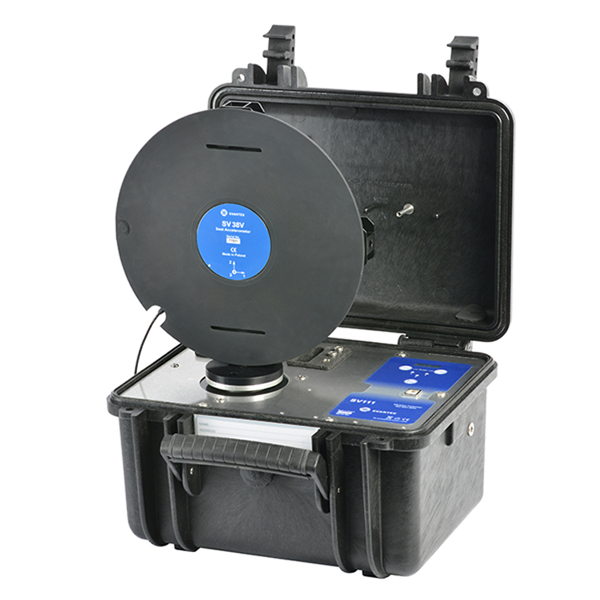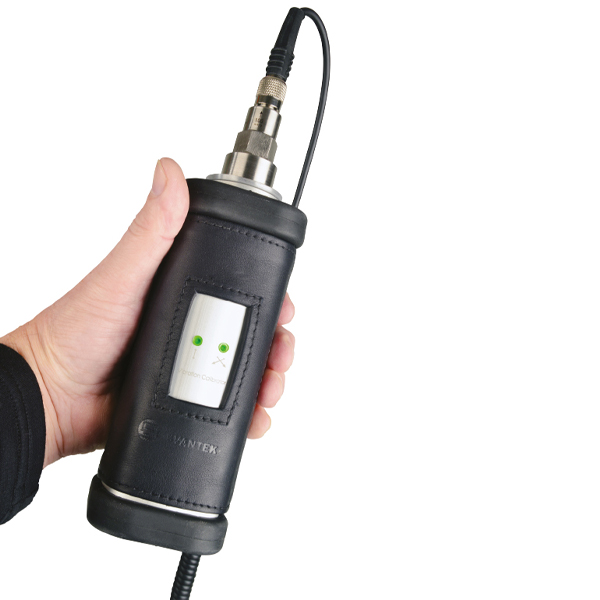
Vibration calibrators are essential tools for ensuring the accuracy of vibration measurement instruments. They are used to verify and calibrate the performance of vibration meters, accelerometers, and other types of vibration monitoring equipment. With the growing importance of workplace safety and the need for precise measurements of vibration exposure, it is critical to have reliable and accurate vibration calibrators.
In this section, we will explore the different types of vibration calibrators available on the market, their features, and the key factors to consider when choosing the right one for your needs. Whether you are looking for a handheld calibrator for field use, or a laboratory-grade calibrator for more complex testing, you will find information to help you make an informed decision.



Home » Sound and Vibration » Vibration Calibrators
Vibration calibrators are user-friendly tools that verify the accuracy of vibration measuring equipment at specific accelerations and reference frequencies. They are essential to guarantee the validity of measurements, and the field team uses them to assess the performance of the vibration monitor before and after each measurement. This allows them to determine the equipment’s state and confirm its ability to perform accurate measurements. While they are not a calibration tool themselves, they are referenced in standards such as ISO 8041, which requires that the instrument be periodically checked against specified frequency and acceleration parameters.
A vibration calibrator is used to ensure the accuracy of vibration measurements by providing a reference signal that represents the actual vibration levels. The calibrator generates a precisely controlled and stable vibration signal that can be compared to the output of the vibration measurement instrument. By comparing the output of the measurement instrument to the reference signal generated by the calibrator, any errors or inaccuracies in the measurement instrument can be identified and corrected. This helps to ensure that the vibration measurement readings are accurate and reliable, which is important in many applications where the vibration levels need to be monitored and controlled.
Calibrating your vibration calibrator is an important step in ensuring its accuracy in measuring vibrations. The process of calibrating a calibrator typically involves comparing its readings to those of a reference standard or device that is known to be accurate. This can be done through the use of special test equipment or by following a set of established procedures. The specific method used will depend on the type of calibrator you have and the manufacturer’s instructions. It is also important to regularly calibrate your calibrator to ensure its accuracy over time. If you are unsure of how to calibrate your calibrator, it is recommended to consult the manufacturer’s instructions or seek the help of a professional calibrator.
The frequency at which a vibration monitor should be calibrated depends on several factors, such as the type and accuracy of the instrument, the type of environment in which it is used, and the degree of accuracy required for the measurements. Generally, it is recommended to calibrate vibration monitors annually, or after any significant changes in their usage or operating conditions. Some organizations may require more frequent calibrations, such as every six months or even more frequently, depending on the sensitivity and criticality of the equipment being monitored. It is best to consult the manufacturer’s guidelines or follow industry standards and regulations to determine the appropriate calibration interval for your specific vibration monitor.
A vibration calibrator can bring several benefits in industrial applications, some of which are:
Improved accuracy and reliability: Regular calibration of a vibration monitor helps to ensure that the measurements are accurate and reliable, providing more confidence in the results and minimizing the risk of errors.
Compliance with industry standards: Calibrating a vibration monitor is often a requirement to meet industry standards, such as ISO standards, which specify the acceptable levels of vibration exposure in the workplace.
Increased safety: Regular calibration of a vibration monitor can help to identify and prevent negative health effects that can result from exposure to excessive vibrations in the workplace.
Improved maintenance practices: By providing accurate measurements of vibration levels, a calibrated vibration monitor can help to identify when maintenance is needed on machinery and equipment, leading to increased efficiency and reduced downtime.
Increased productivity: By ensuring accurate measurements and reducing the risk of errors, a calibrated vibration monitor can help to improve the overall efficiency and productivity of industrial operations.
Vibration calibrators are highly accurate and efficient when compared to other methods of calibration. They are designed specifically to verify the accuracy of vibration measuring equipment, and they can perform this task at one or more accelerations and reference frequencies. This makes them an ideal solution for ensuring the validity of vibration measurements, especially in industrial applications where accuracy is critical.
Compared to other methods of calibration, such as laboratory calibrations or the use of transfer standards, vibration calibrators are much more efficient. They are portable, easy to operate, and can be used in the field, which means that they can be used to verify the accuracy of vibration measuring equipment at any time, without the need for additional equipment or the need to send the equipment to a laboratory.
In terms of accuracy, vibration calibrators are highly reliable. They are designed to meet industry standards, such as ISO 8041, and they are regularly calibrated to ensure their accuracy. This means that they provide reliable and accurate results, which can be used to verify the accuracy of vibration measuring equipment and to ensure that it is functioning properly.
What factors should be considered when selecting a vibration calibrator?
When selecting a vibration calibrator, several factors should be considered to ensure that you choose the right calibrator for your needs:
Measurement Range: Ensure that the calibrator covers the measurement range you need, including the minimum and maximum frequencies and accelerations that you need to calibrate.
Accuracy: Consider the accuracy of the calibrator, as this will determine the accuracy of the calibrations performed.
Size and Portability: Consider the size and portability of the calibrator, especially if you need to use it in different locations or take it on-site.
User-Friendliness: Consider the ease of use of the calibrator, especially if you are new to vibration testing or if you need to train others to use it.
Compatibility: Ensure that the calibrator is compatible with your existing equipment and software, as this will make it easier to integrate into your workflow.
Cost: Consider the cost of the calibrator and its accessories, as well as any associated costs such as training, software upgrades, and maintenance.
Support: Consider the level of support offered by the manufacturer, including warranty, technical support, and access to software upgrades.
By considering these factors, you can select a vibration calibrator that meets your specific needs and helps you achieve accurate and efficient calibrations.
At Inteccon, we offer a range of high-quality and reliable vibration calibrators to meet the needs of various industrial applications. Our models are designed with the latest technology to provide accurate and efficient calibrations for vibration measuring equipment. Our calibrators are easy to operate and come with a user-friendly interface, allowing for quick and simple verification of vibration measurements. Whether you need a calibrator for general vibration measurements, or for more specific applications, we have the right model to meet your needs. Our team of experts is always available to provide support and guidance to ensure you choose the best calibrator for your specific requirements.
The SV 110 is a compact and easy-to-use hand-held vibration calibrator designed for the verification of machine sensors and on-site checks of human vibration accelerometers in accordance with ISO 8041. With its small size, the SV 110 is perfect for checking sensors at machines and can be used to calibrate both hand-arm vibration meters and machine vibration meters.
The calibrator features two frequencies, 79.6 Hz and 159.2 Hz, and allows for calibration levels ranging from 1 m/s2 to 10 m/s2. The calibrator has a built-in triaxial reference accelerometer that measures cross-axis vibrations to detect any interference with the calibration signal, ensuring the stability of both the calibration level and frequency. The calibrator’s menu allows for easy selection between the metric systems ‘g’ and ‘m/s2’, and is operated by three push-buttons and a small OLED display.
With its built-in rechargeable batteries, the SV 110 can operate for up to 12 hours of continuous use. The calibrator also has an automatic fault detection system indicated by LED diodes, ensuring that any issues with the calibrator are quickly identified and addressed. The compact design and light weight of the SV 110 make it a convenient and practical solution for on-site calibration checks.
The SV 111 is a high-quality vibration calibrator designed for human vibration measurements according to ISO 8041 standards. It features a triaxial reference accelerometer and microprocessor-controlled shaker, ensuring stability and accuracy of calibration levels and frequency, regardless of the test object’s mass. The calibrator offers multiple frequencies (16 Hz, 80 Hz and 160 Hz) and selectable vibration levels. The shaker has a loading capability of up to 1 kilogram, making it suitable for calibrating complete seat accelerometers in all three axes. The SV 111 can be used to calibrate a wide range of vibration transducers, including acceleration, velocity, and displacement. It is waterproof, has a rechargeable battery for 20 hours of continuous operation, and is easy to use in the field.
Tel +1 561-912-9809 / 561-9112-7201
E-mail [email protected]
6590 W Rogers Circle Suite# 11&12
Boca Raton – FL 33487
+1 561-912-9809 / +1 561-912-7201
[email protected]
6590 W Rogers Circle, Suite #11&12
Boca Raton, FL 33487